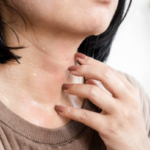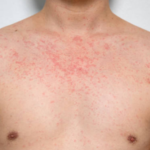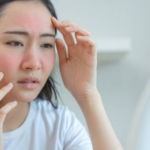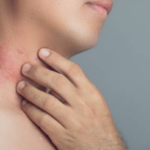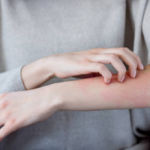Anxiety Rash
Anxiety rash, also known as stress rash or stress-induced rash, refers to a skin condition that can occur due to heightened anxiety or stress levels. While anxiety is primarily an emotional or psychological response, it can manifest physically in various ways, including developing a rash on the skin.
What Does Anxiety Rash Look Like?
It can have various appearances, but generally, it presents as redness, inflammation, or a rash-like pattern on the skin. The rash may be characterized by patches of red, flushed skin or raised bumps. It can be itchy, and in some cases, hives may also be present. The specific appearance of an anxiety stress rash can vary from person to person. It may depend on factors such as the individual’s skin type and the severity of the anxiety or stress experienced.
Anxiety stress rash, triggered by elevated stress levels, can exhibit similar characteristics. It often appears as redness, inflammation, or a rash-like pattern on the skin. Itching, raised bumps, or hives may accompany it. The rash from anxiety can occur in different body areas, including the chest, face, neck, arms, or hands.
Anxiety Stress Rash
Anxiety stress rash, also known as stress-induced rash, is a skin condition that can occur due to elevated anxiety or stress levels. When a person experiences intense stress or anxiety, it can trigger various physiological responses in the body, including changes in the skin. The exact cause of rash from anxiety is not fully understood. Still, it is believed to be related to the release of stress hormones, such as cortisol, which can affect the immune system and lead to skin inflammation.
Symptoms
The symptoms of anxiety rash or stress-induced rash can vary from person to person, but commonly reported symptoms include:
- Redness: The affected area of the skin may appear red or flushed.
- Itching: An intense itching sensation may be present in the rash area, leading to a strong urge to scratch.
- Raised bumps or hives: The rash may consist of small raised bumps or hives, which can be itchy and vary in size and shape.
- Rash on different body parts: Anxiety stress rash can occur on various areas of the body, such as the chest, face, neck, arms, hands, or other parts, depending on the individual.
- Swelling: In some cases, the affected area may become swollen or puffy.
- Skin sensitivity: The skin in the affected area may feel more sensitive or tender to touch.
- Rash patterns: The rash may appear in patchy patterns or as a generalized rash across larger body areas.
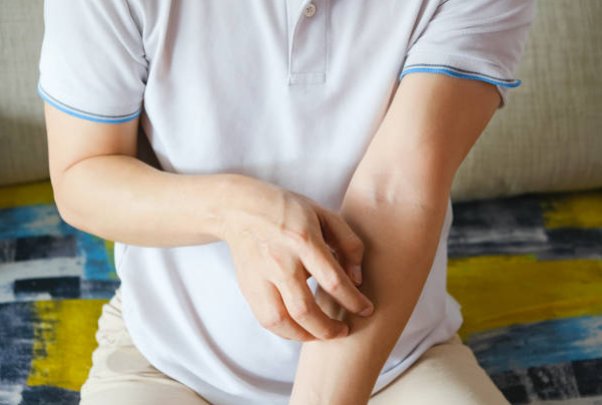
Skip To:
Learn More:
- Adjustment Disorder with Anxiety, Symptoms, Causes & Treatment
- ADHD and Anxiety, Symptoms, Connections & Coping Mechanisms
- Hydroxyzine for Anxiety, How It Works, Side Effects, and Dosage
- Prozac for Anxiety. Does It Work? Does Prozac Help With Anxiety? Prozac Anxiety Side Effects, Interactions, and Dangers.
- Types of Anxiety, Causes, Symptoms, and Treatments
Anxiety and Stress Fact Sheet
Anxiety Disorders Overview
Anxiety disorders are a group of mental health conditions characterized by excessive and persistent feelings of fear, worry, and anxiety. They can significantly impact a person’s thoughts, emotions, behaviors, and physical well-being.
Anxiety Symptoms
Behavioral: Hypervigilance, irritability, or restlessness.
Cognitive: Lack of concentration, racing thoughts, or unwanted thoughts.
Whole body: Fatigue or sweating.
Also common: Anxiety, excessive worry, fear, insomnia, nausea, palpitations, or trembling.
Stress Overview
Stress is a natural physiological and psychological response to demands or pressures placed on an individual. It is a normal part of life and can serve as a motivator in certain situations. However, when stress becomes excessive or chronic, it can negatively affect physical and mental well-being.
Causes of Stress:
- Work-related stress: Heavy workloads, tight deadlines, conflicts with colleagues, or job insecurity can contribute to stress.
- Personal life stressors: Relationship issues, financial difficulties, major life changes (such as moving or divorce), or the loss of a loved one can be significant stressors.
- Environmental stressors: Factors like noise, pollution, overcrowding, or exposure to extreme weather conditions can contribute to stress.
- Traumatic events: Experiencing or witnessing a traumatic event, such as accidents, natural disasters, or violence, can lead to stress.
End the Emotional Pain. Get Your Life Back.
Feeling Depressed, Anxious or Struggling with Mental Health Illness? Get Safe Comfortable Mental Health Dual Diagnosis High-Quality Therapy From Counselors That Care. Begin Your Recovery Now.
Hotline: (509) 348-4077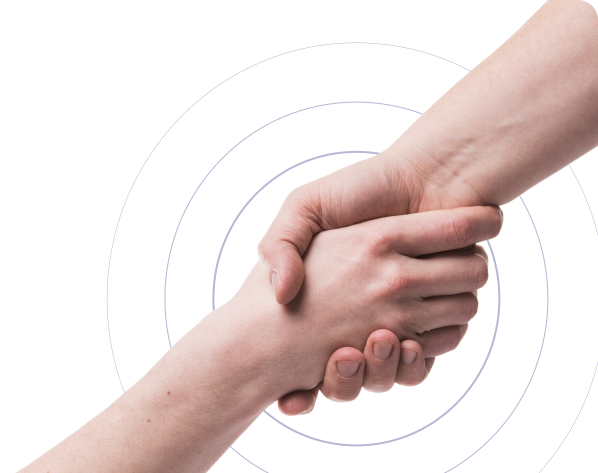
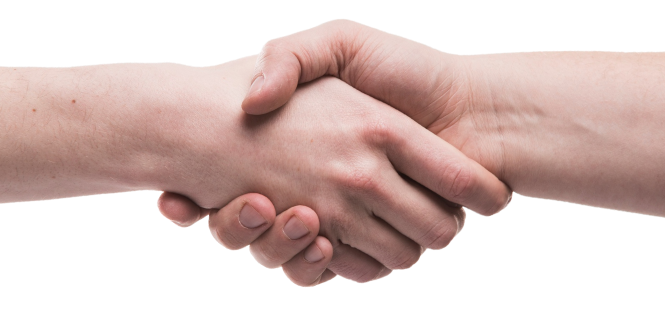
Anxiety Statistics
Uncover the numbers behind anxiety. Global burden, work impairment, economic costs, and the co-occurrence with depression—discover the profound impact on individuals and society.
264 million
Anxiety disorders are among the most common mental health conditions worldwide, affecting a significant portion of the population. An estimated 264 million people globally were living with anxiety disorders in 2017.
Source: WHO
50%
Anxiety and depression often coexist. It is reported that approximately 50% of individuals diagnosed with an anxiety disorder are also diagnosed with depression at some point in their lives.
Source: ADAA
$42 billion
The economic costs associated with anxiety disorders are substantial. Anxiety disorders cost more than $42 billion annually in healthcare expenses and lost productivity in the United States.
Source: Journal of Clinical Psychiatry
Causes of Anxiety Stress Rashes
The causes of an anxiety rash are closely linked to the body’s response to stress and anxiety. When a person experiences heightened stress or anxiety levels, it can trigger various physiological reactions in the body that may contribute to developing a rash. Some possible causes and mechanisms behind an anxiety rash include:
- Stress hormones: Stress activates the release of stress hormones such as cortisol, which can impact the immune system and skin cells. This can lead to inflammation and the development of a rash.
- Immune system response: Stress and anxiety can affect the immune system, potentially leading to an overactive immune response or increased sensitivity in the skin. This immune response can manifest as a rash.
- Increased blood flow: Stress and anxiety can cause blood vessels to dilate, resulting in increased blood flow to the skin. This can lead to redness and the appearance of a rash.
- Skin conditions: People with pre-existing skin conditions like eczema, psoriasis, or rosacea may experience flare-ups triggered by stress and anxiety. These flare-ups can present as a rash.
- Scratching or rubbing: In response to anxiety or stress, individuals may engage in behaviors such as scratching, picking, or rubbing their skin. These actions can irritate the skin and potentially lead to the development of a rash.
Get Help. Get Better. Get Your Life Back.
Searching for Accredited Dual Diagnosis Mental Health Centers Near You?
Even if therapy failed previously, or are in the middle of a difficult crisis, we stand ready to support you. Our trusted behavioral health specialists will not give up on you. When you feel ready or just want someone to speak to about counseling alternatives to change your life call us. Even if we cannot assist you, we will lead you to wherever you can get support. There is no obligation. Call our hotline today.
FREE 24/7 Dual Diagnosis Mental Health Services HotlineFirst-class Facilities & Amenities
World-class High-Quality Mental Health Services & Behaviroal Health Substance Abuse Treatment
Rehab Centers TourRenowned Mental Health Centers. Serene Private Facilities. Inpatient Rehab Programs Vary.
Mental Health Helpline: (509) 348-4077Proven recovery success experience, backed by a Team w/ History of:
15+
Years of Unified Experience
100s
5-Star Reviews Across Our Centers
10K
Recovery Success Stories Across Our Network
- Low Patient to Therapist Ratio
- Comprehensive Dual-Diagnosis Treatment
- Complimentary Family & Alumni Programs
- Coaching, Recovery & Development Events
- Comfortable Onsite Medical Detox Center
Treatments for Anxiety Stress Rashes
The treatment of anxiety stress rashes focuses on addressing the underlying anxiety or stress and managing the symptoms of the rash. Here are some potential treatment approaches:
- Stress and anxiety management: Managing stress and anxiety is crucial in addressing anxiety stress rashes. Techniques such as relaxation exercises, deep breathing, meditation, and mindfulness can help reduce anxiety levels and alleviate symptoms.
- Cognitive-behavioral therapy (CBT): CBT is a therapeutic approach that can effectively manage anxiety and stress. It helps individuals identify and change negative thought patterns and behaviors that contribute to stress and anxiety, potentially reducing the frequency and severity of anxiety stress rashes.
- Topical treatments: Depending on the specific symptoms and characteristics of the rash, a healthcare professional or dermatologist may recommend topical treatments. These can include corticosteroid creams or ointments to reduce inflammation, itchiness, and redness associated with the rash.
- Moisturizing and gentle skincare: Keeping the skin well-moisturized can help alleviate dryness and irritation associated with the rash. Gentle, hypoallergenic skincare products without harsh chemicals or fragrances can prevent further skin irritation.
- Avoiding triggers: Identifying and avoiding triggers that worsen stress and anxiety can help reduce the frequency and intensity of anxiety stress rashes. This may involve making lifestyle changes, setting boundaries, or seeking support in managing stressors.
- Self-care practices: Self-care activities can promote overall well-being and help manage stress. This can include regular exercise, maintaining a healthy diet, getting sufficient sleep, and participating in activities that bring joy and relaxation.
- Medications: In some cases, when anxiety symptoms are severe and impact daily functioning, a healthcare professional may prescribe medications such as anti-anxiety medications or antidepressants to help manage anxiety and potentially reduce the occurrence of anxiety stress rashes. This should be discussed and determined in consultation with a healthcare professional.
World-class, Accredited, 5-Star Reviewed, Effective Mental Health Dual Diagnosis Programs. Complete Integrated Inpatient Rehab with Free Post Discharge Therapy Planning.
Hotline: (509) 348-4077End the Emotional Pain Rollercoaster. Gain Stability & Happiness Through Recovery Treatment. Start Mental Health Counseling Today. Get Free No-obligation Guidance by Behaviroal Health Specialists Who Understand Mental Health Recovery.
Popular Anxiety Stress Rash FAQs
-
Can anxiety cause a rash?
Yes, anxiety can potentially cause a rash. When a person experiences high levels of anxiety or stress, it can trigger various physiological responses in the body, including changes in the skin. Stress and anxiety can activate the body’s stress response, releasing stress hormones such as cortisol. These hormonal changes can affect the immune system and cause inflammation, which may manifest as a rash on the skin.
-
What does an anxiety rash look like?
An anxiety stess rash can present as redness and flushing of the skin, accompanied by intense itching and raised bumps or hives. It may appear as patchy areas or cover larger regions of the body. Swelling and increased sensitivity in the affected area can also be observed.
-
What does anxiety neck rash thyroid look like?
An anxiety neck rash related to the thyroid can vary in appearance depending on the individual and underlying factors. However, it may manifest as redness, irritation, or a rash on the neck region.
-
What does anxiety rash on chest look like?
Anxiety rashes on the chest can appear as redness, inflammation, or a rash-like pattern on the skin of the chest area. Itching, raised bumps, or hives may accompany the rash.
-
What does anxiety rash on face look like?
Anxiety rashes on the face can have various appearances, but it typically manifests as redness or flushing of the skin on the face. The rash may be accompanied by itching, raised bumps, or hives on the facial skin.
-
What does anxiety rash on neck look like?
Anxiety rashes on the neck can appear as redness, inflammation, or a rash-like pattern on the skin, specifically in the neck area. The rash may be accompanied by itching, raised bumps, or hives localized to the neck.
-
What does anxiety rash on arms look like?
Anxiety rashes on the arms can manifest as redness, irritation, or a rash-like appearance on the skin, specifically in the arm area. The rash may be accompanied by itching, raised bumps, or hives localized to the arms.
Powerful Coping Skills for Anxiety. Top Mental Health Tips & Anxiety Tips Advice from a Therapist.
“Anxiety, when gone untreated, can increase over time. So here are four tips to calm your everyday anxiety. Take a breath. Do something that you enjoy. Remove yourself from the situation and go for a walk. Doing these four things gives you a better chance of calming your anxiety.”
Experience Transformative Recovery at the We Level Up Treatment Center.
See our authentic success stories. Get inspired.
Get the help you deserve.



Start a New Life
Begin with a free call to a behavioral health treatment advisor. Learn more about our dual-diagnosis programs. The We Level Up treatment center network delivers recovery programs that vary by each treatment facility. Call to learn more.
- Personalized Care
- Caring Accountable Staff
- World-class Amenities
- Licensed & Accredited
- Renowned w/ 5-Star Reviews
We’ll Call You
Search We Level Up WA Mental Health Anxiety Rash Topics & Resources
Sources
- National Institute of Mental Health – “Anxiety Disorders” Link: https://www.nimh.nih.gov/health/topics/anxiety-disorders/index.shtml
- Centers for Disease Control and Prevention (CDC) – “Mental Health – Anxiety and Depression” Link: https://www.cdc.gov/mentalhealth/learn/index.htm
- National Heart, Lung, and Blood Institute – “Coping With Stress and Anxiety” Link: https://www.nhlbi.nih.gov/health-topics/coping-with-stress-and-anxiety
- MedlinePlus – “Anxiety” Link: https://medlineplus.gov/anxiety.html
- Substance Abuse and Mental Health Services Administration (SAMHSA) – “Anxiety Disorders” Link: https://www.samhsa.gov/conditions/anxiety-disorders
- National Institute on Aging – “Anxiety Disorders in Older Adults” Link: https://www.nia.nih.gov/health/anxiety-disorders-older-adults
- Office on Women’s Health – “Anxiety Disorders” Link: https://www.womenshealth.gov/mental-health/mental-health-conditions/anxiety-disorders
- National Center for Complementary and Integrative Health – “Anxiety” Link: https://www.nccih.nih.gov/health/anxiety-at-a-glance
- U.S. Department of Veterans Affairs – “Anxiety Disorders” Link: https://www.mentalhealth.va.gov/anxiety.asp
- National Library of Medicine – “Anxiety” Link: https://medlineplus.gov/anxiety.html
